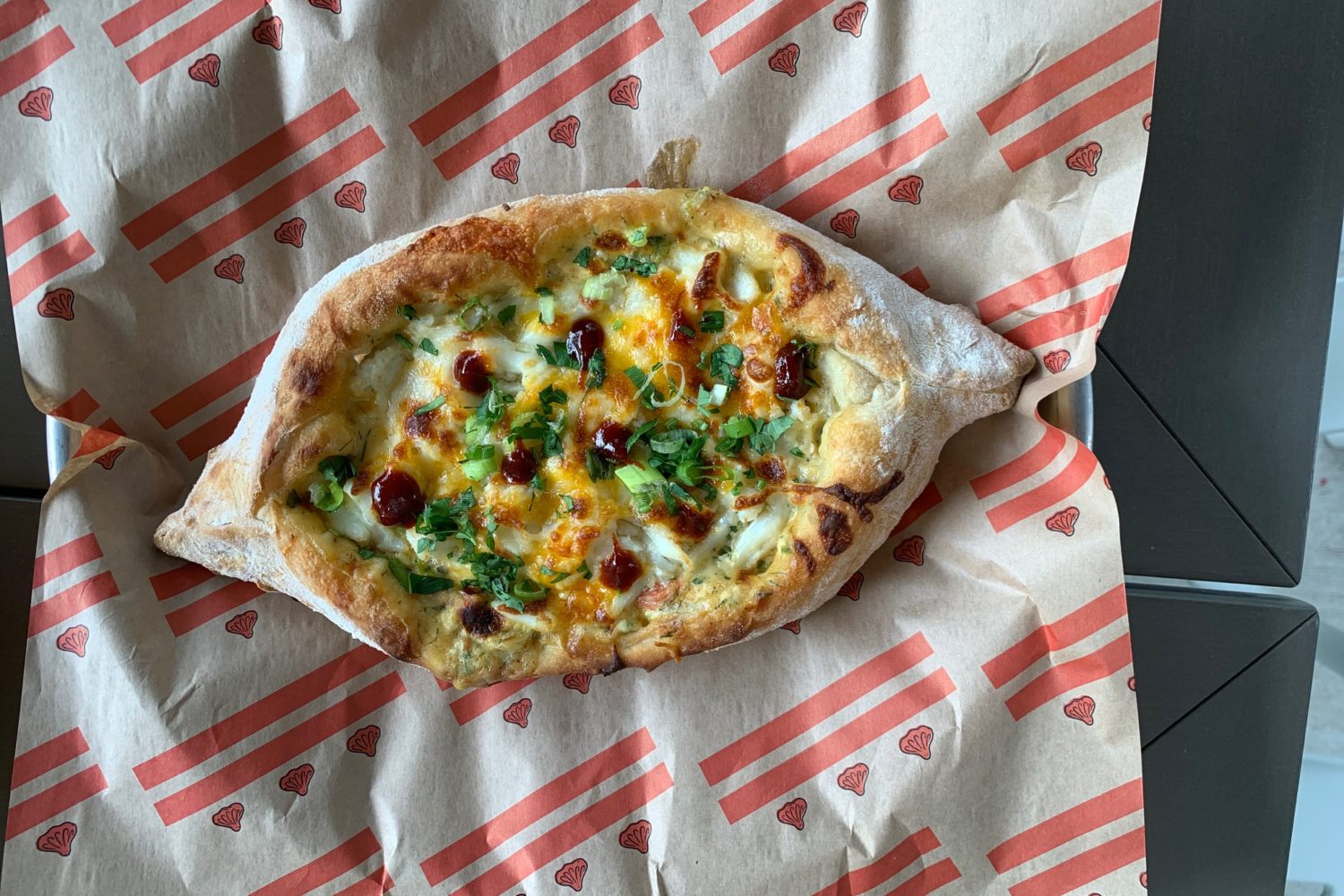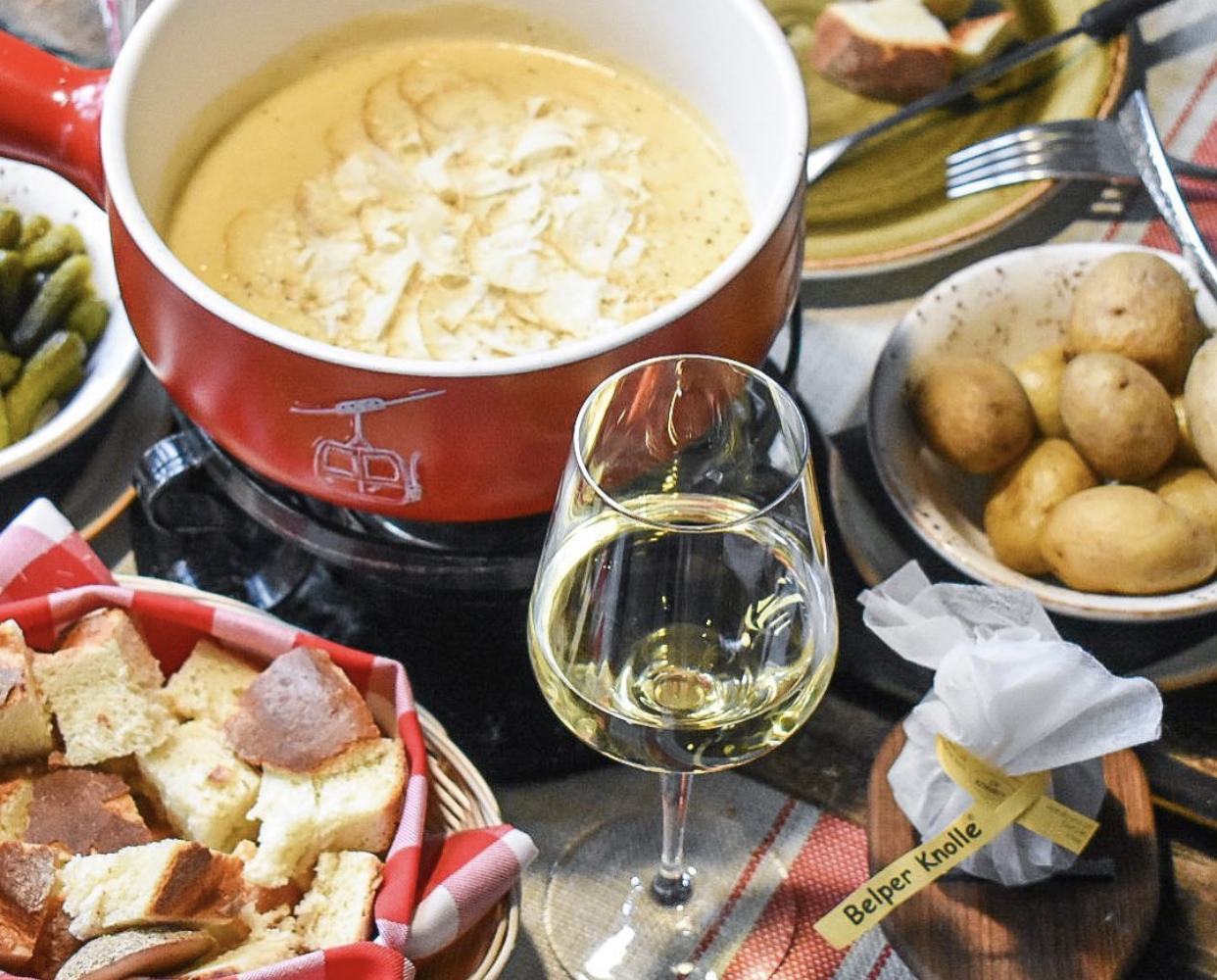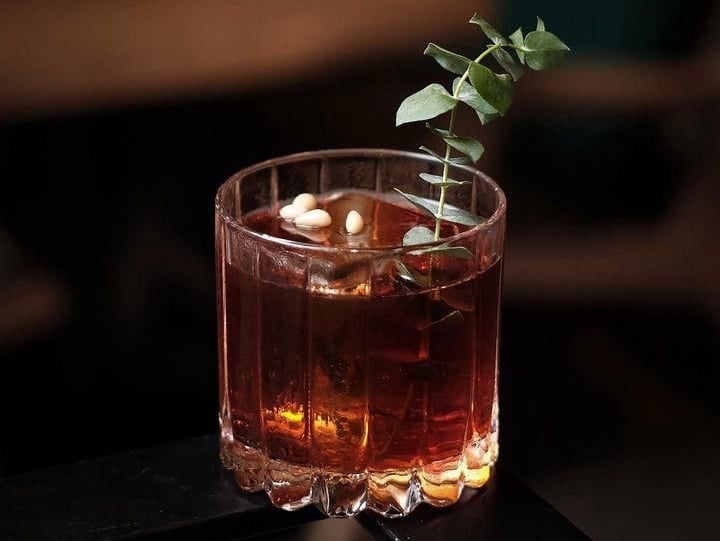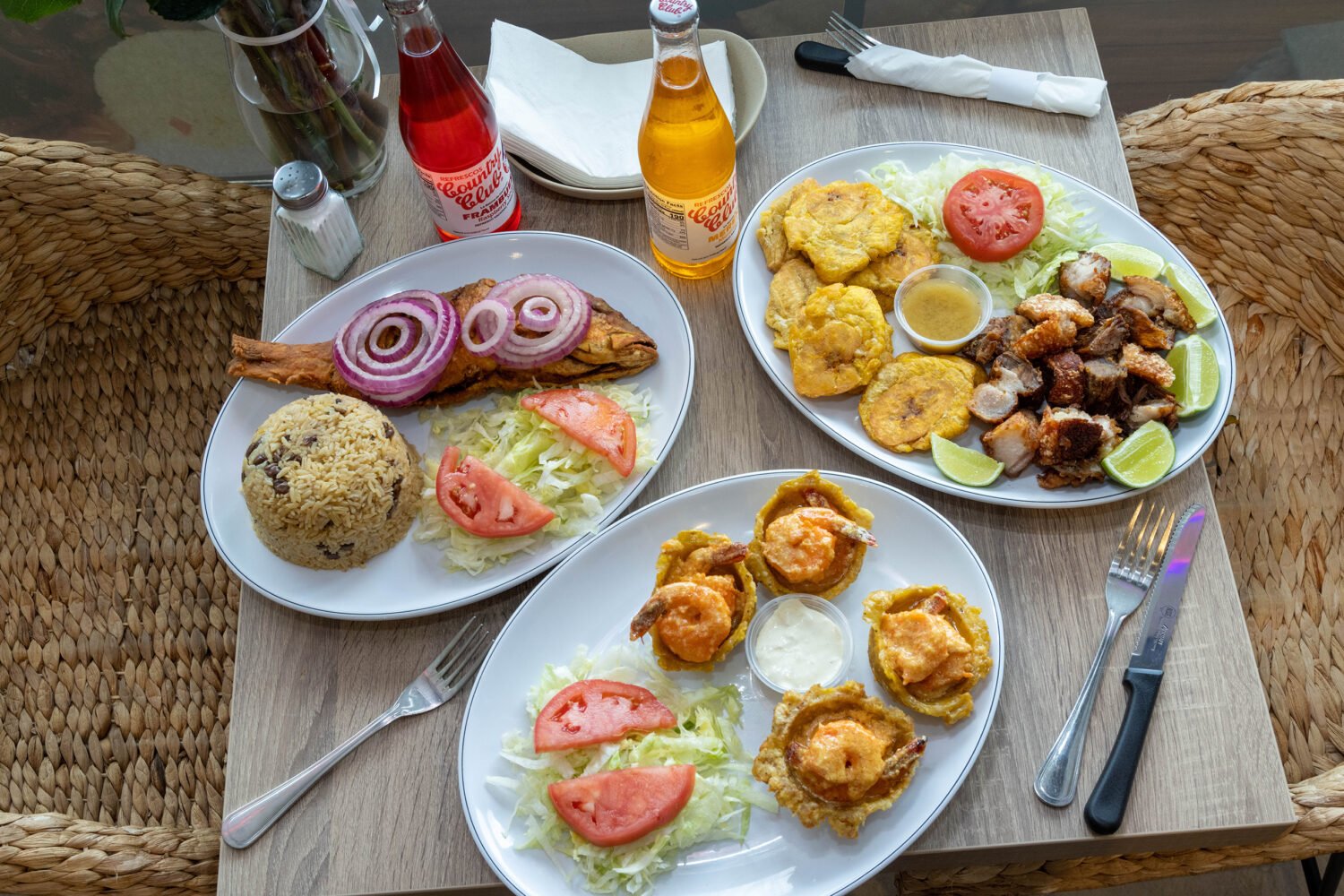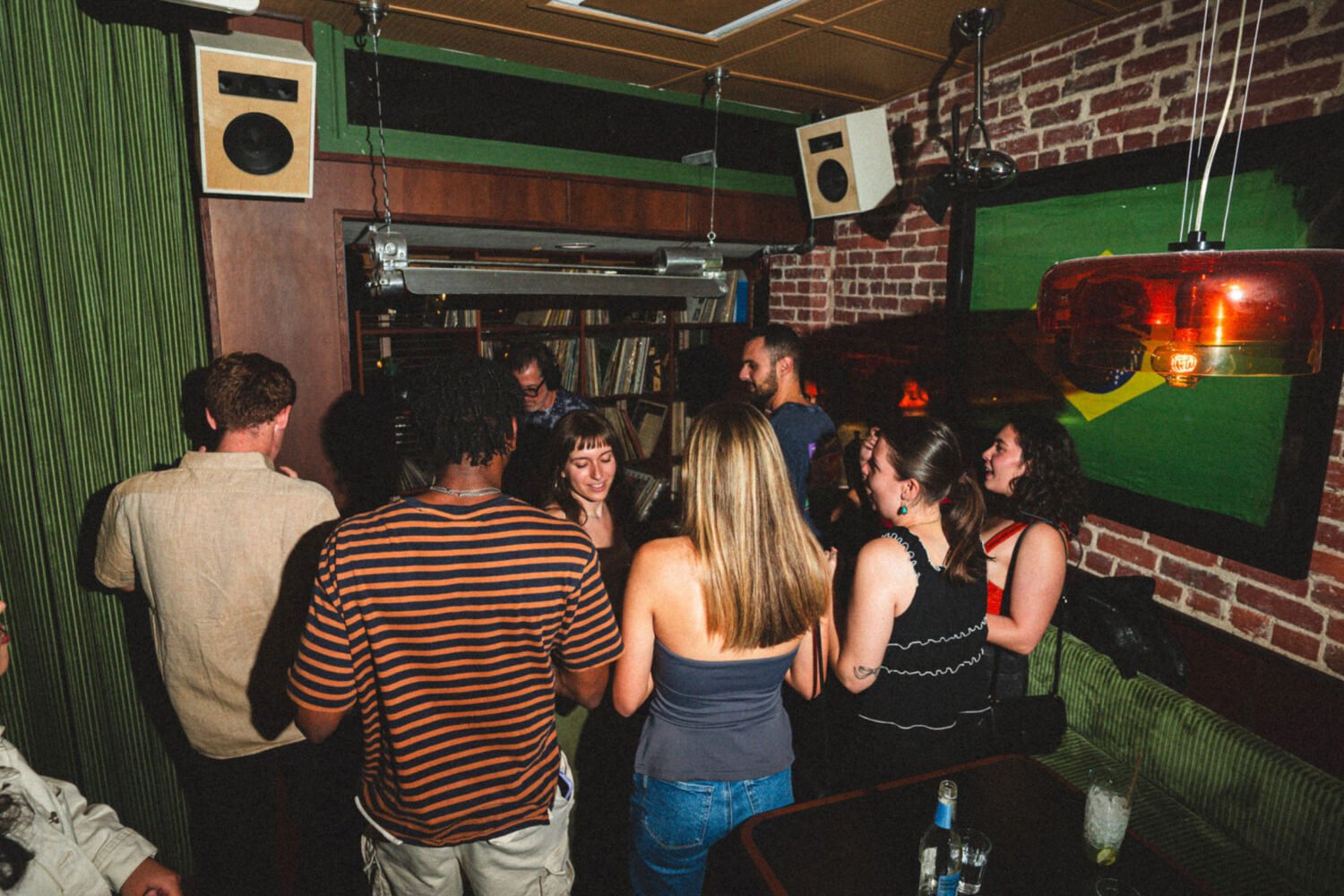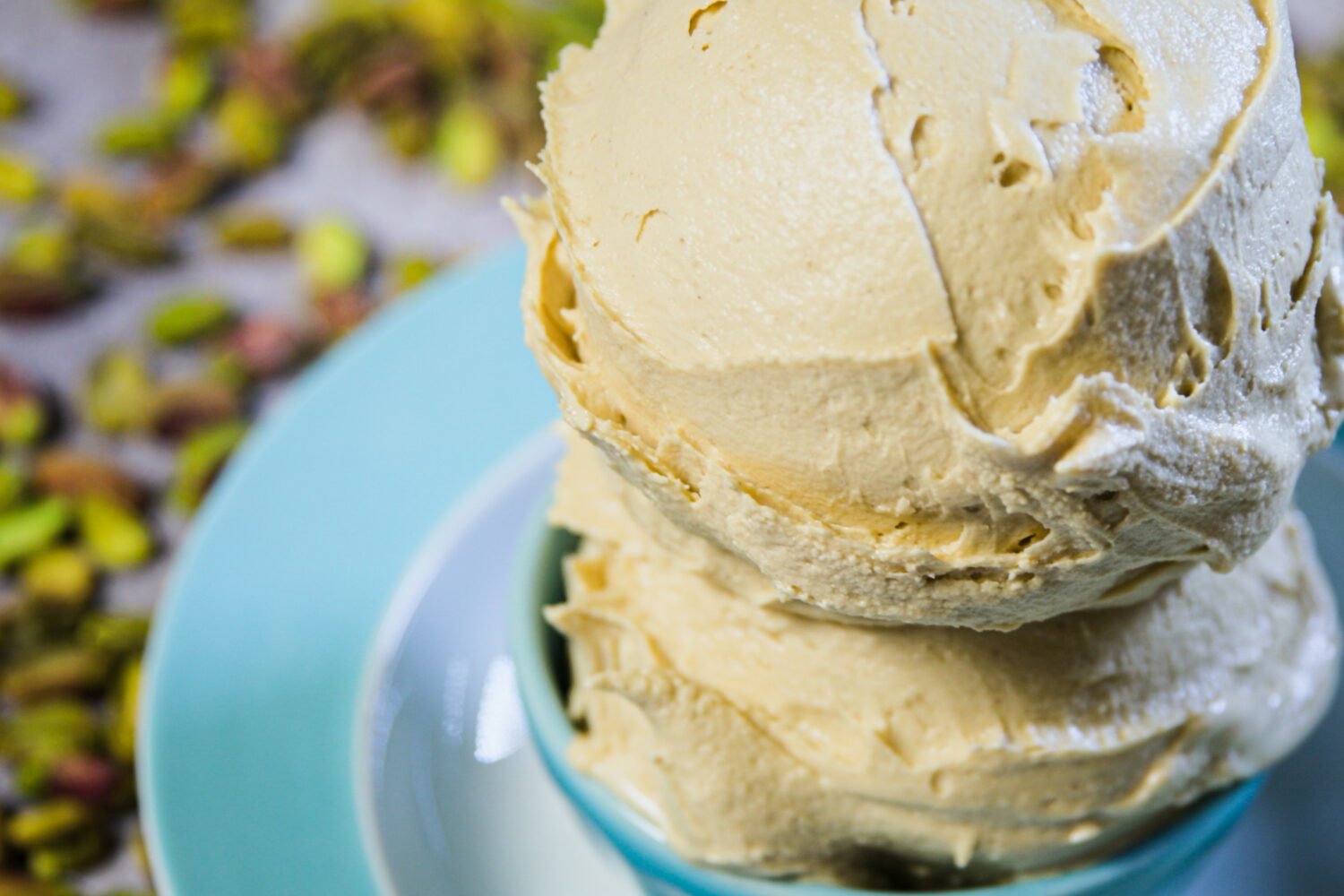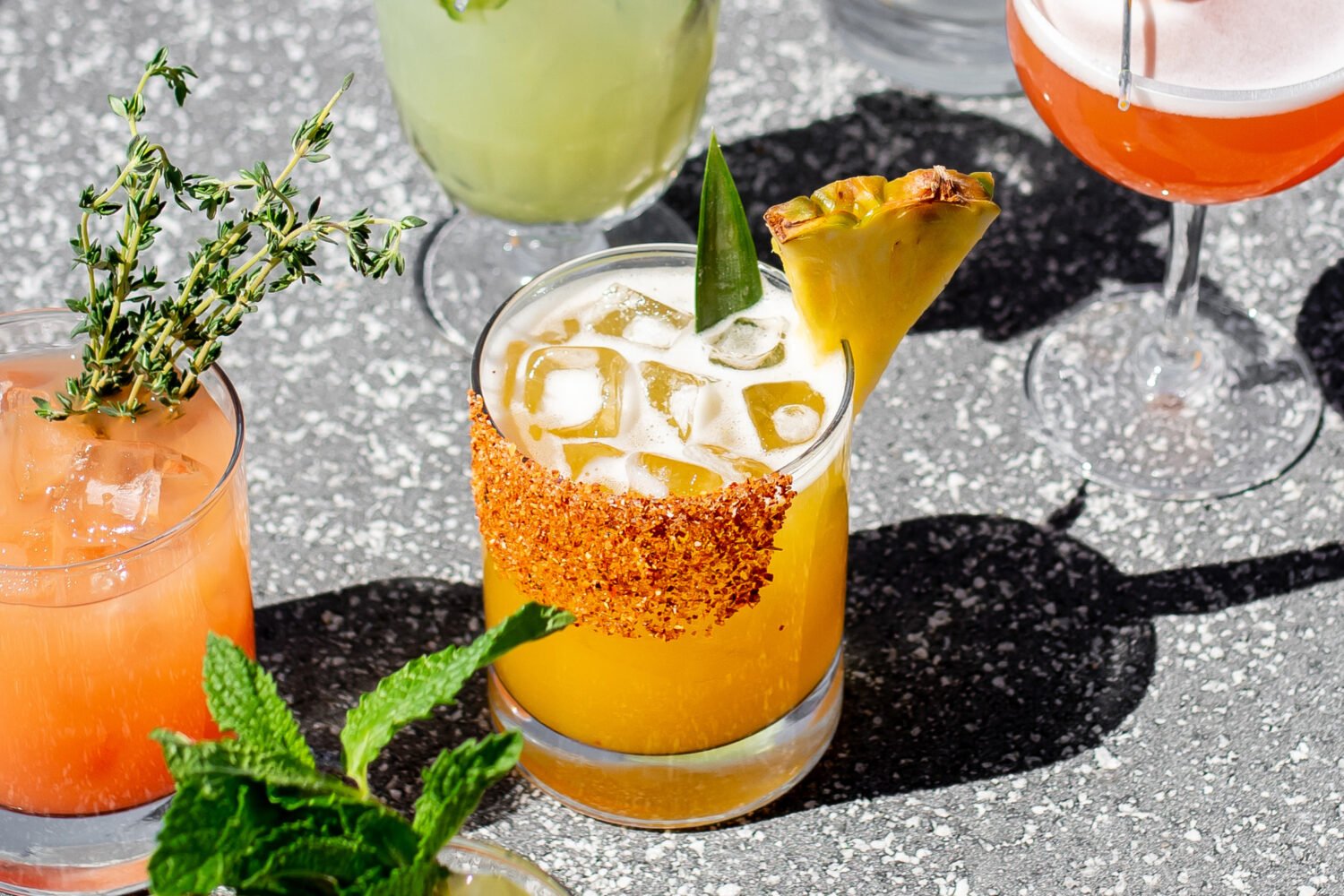At 50, Todd Thrasher has covered a lot of ground in the bar industry.
The barman-turned-distiller pioneered the super-serious speakeasy trend in the early 2000s at his Alexandria cocktail haunt, PX—complete with a list of house rules (i.e. no standing at the bar). The formality was, in part, an effort to create a serious cocktail scene in DC. But once that was established, he helped push the pendulum in the opposite direction, opening Thrasher’s rum distillery and colorful, bamboo-heavy Tiki TNT bar at the Wharf. Standing—in flip-flops and shorts—is encouraged.
During the pandemic, Thrasher was forced to shut down the bar at his nearly three year-old operation. But now that bars in the District are allowed to fully reopen, he’s coming back with tiki torches blazing—and a recent Esquire “Best Bars in America” award in hand. On Monday, he’s hosting Thrasher’s Rum Royale on the rooftop of his tiki bar. The cocktail competition, which is open to the public, will pit 10 up-and-coming bartenders against one another to make the best rum cocktails and vie for a grand prize of $3,000
We chatted with Thrasher about what his industry looks like as it’s emerging from the pandemic shutdown, what trends are emerging, and why the White Claw craze may (finally?) be over.
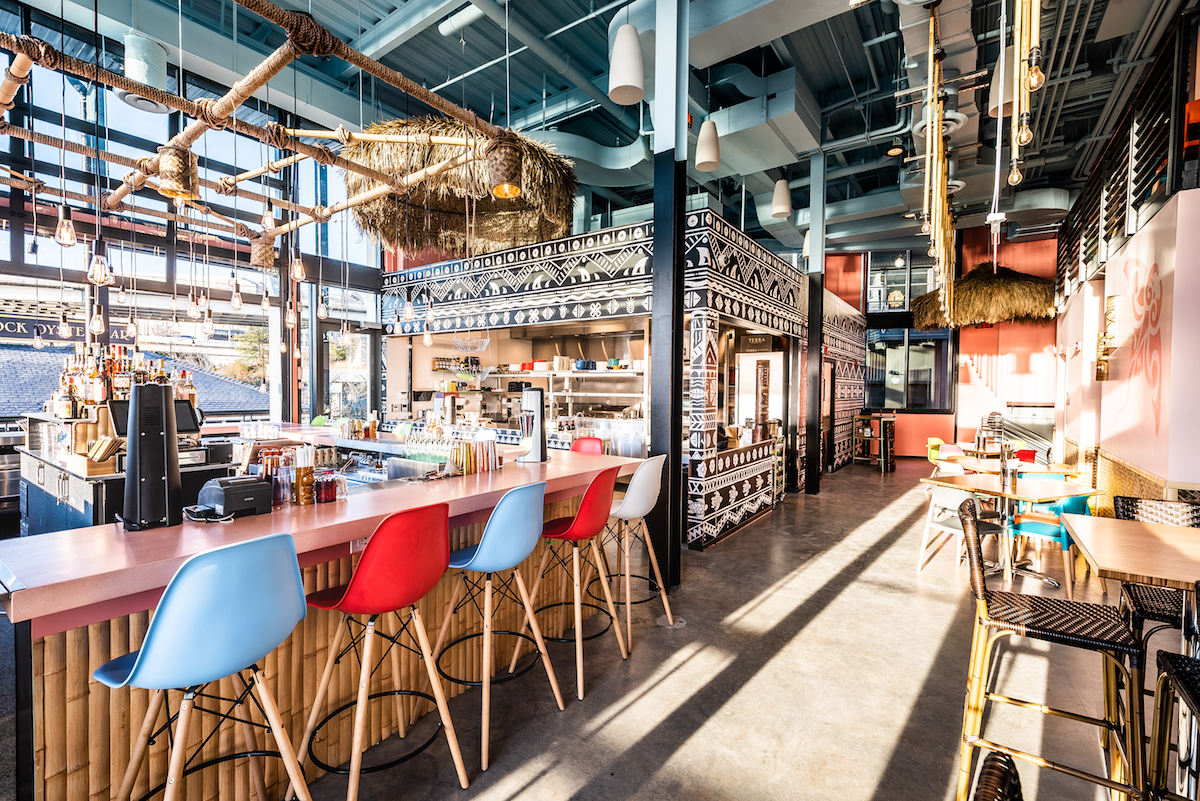
A hot topic right in the restaurant industry is the nationwide staffing shortage. Is that happening in bars as well?
Absolutely. Before, I could put an ad out and have 20 bartenders apply. And now the only thing I’m short on is bartenders. I think people got out. I was talking to a friend who owns an HVAC company—the shutdown didn’t change anything for his business. I didn’t take a paycheck for four months. A lot of bartenders live day to day. It [the pandemic] sucked for them. When we reopened, I had one bartender come back.
What do you think is the reason for people leaving, and what can bar owners do to retain employees in the future?
Most of the bartenders I’ve had in the last 10, 15 years have college degrees. But they got stuck. They started making 60 or 70,000 a year [bartending], and the golden handcuffs get put on. Covid gave them an opportunity to get out and try using their degrees. One thing I implemented, I put a 22 percent service charge on every check, and 100 percent of that gets to the staff. I’ve had guests refuse to pay it, and well, you don’t have to come in. My staff came in when there was a pandemic going on. If you come to work in a place like ours that’s very heavily tourist-driven, a lot of time tourists don’t leave as good a gratuity—or gratuity at all —because they’re never going to see people again. So I want to make sure my staff is taken care of.
What are you some of your biggest takeaways over the last pandemic year-plus?
Being sick was frowned upon before. I’m old school, you don’t miss work. What I’ve realized over the last three years, even before the pandemic, is that people get sick. People need to take time off. Be nice to people. Listen to your staff. I came from fancy fine dining—we’ve all seen Gordon Ramsay on TV. When I opened Tiki, I never wanted to go back to anything like that. I banned the word ‘chef’ from the restaurant—that doesn’t work here. The main reason waiters and bartenders are here is to make money, and you need to help them make as much money as possible. We offer insurance. We’re looking into a 401K. It’s about providing a nice, safe work environment—that goes a long way.
A lot of people are comparing the reopening of bars and restaurants to the “roaring 20s.” What’s your experience—are people coming out?
As a general rule, I think people are slow to come out. But some of the people who are coming out are out of control. Chad and Becky have officially returned. We had someone come in at 12:45 [PM] on a rainy Saturday, go into the bathroom, and puke—and we hadn’t even served them yet! And that was right before they tried to order the bottomless mimosa brunch. Nope, you’re not doing that. Some people are still apprehensive. The mask thing is tough because now it’s on us. We’d like to keep the masks for now.
What are some of the biggest trends you’re seeing as bars are reopening?
I think one of the biggest trends is adding service to bills. I’ve talked to a few of my friends in the industry and they’re going to stick with it. As far as liquor trends, White Claw is out. We couldn’t keep White Claw in stock in 2019. And now no one wants it. Why? It sucks! And maybe people got their fill during quarantine. Now everyone wants to go out and drink a special drink. White Claw, I can go to Safeway and pick up a 12-pack and come home. It’s harder to make a great mai tai at home.
So do you think the pendulum will swing back to fancy bars with reservations and dress codes?
I think we all crave more complicated things, we just don’t want the process to be complicated. I love fancy cocktails, I love fancy food. I just don’t want the pomp and circumstance. Everyone has been wearing yoga pants for the last year—we still want to be comfortable. When I opened PX in 2005, that was a time when people were getting dressed up and go out. Right now, that’s all changed. I can’t tell you the last time I wore a suit and tie. Everything we do is pretty fancy, but it’s done in a relaxed atmosphere. Almost every cocktail we have has six different ingredients in it, we just figured out how to make a six-ingredient cocktail fast.
You were one of the pioneers of the faux-speakeasy trend with PX. Do you think they’ll make a comeback, or are speakeasies dead?
Don’t quote me, but one day I may do a fancy stupid cocktail bar someplace. With PX, I was looking for perfection, and perfection isn’t reality. I want to be the best fun bar in America. It’s okay to screw stuff up—just don’t screw up the same thing over and over again. But I do want [Thrasher’s Rum] to be a global rum brand. Right now, I’m looking for warehouse space to expand the brand. Our production [at Thrasher’s Rum] died off halfway through Covid. No one was buying artisanal spirits. They were buying brands they know, like Jack. But we put 20 barrels [of rum] away during the first four months of Covid, and people are out drinking again. There’s Tito’s —I want to be Todd-o’s.
*This interview was edited for clarity and length.









